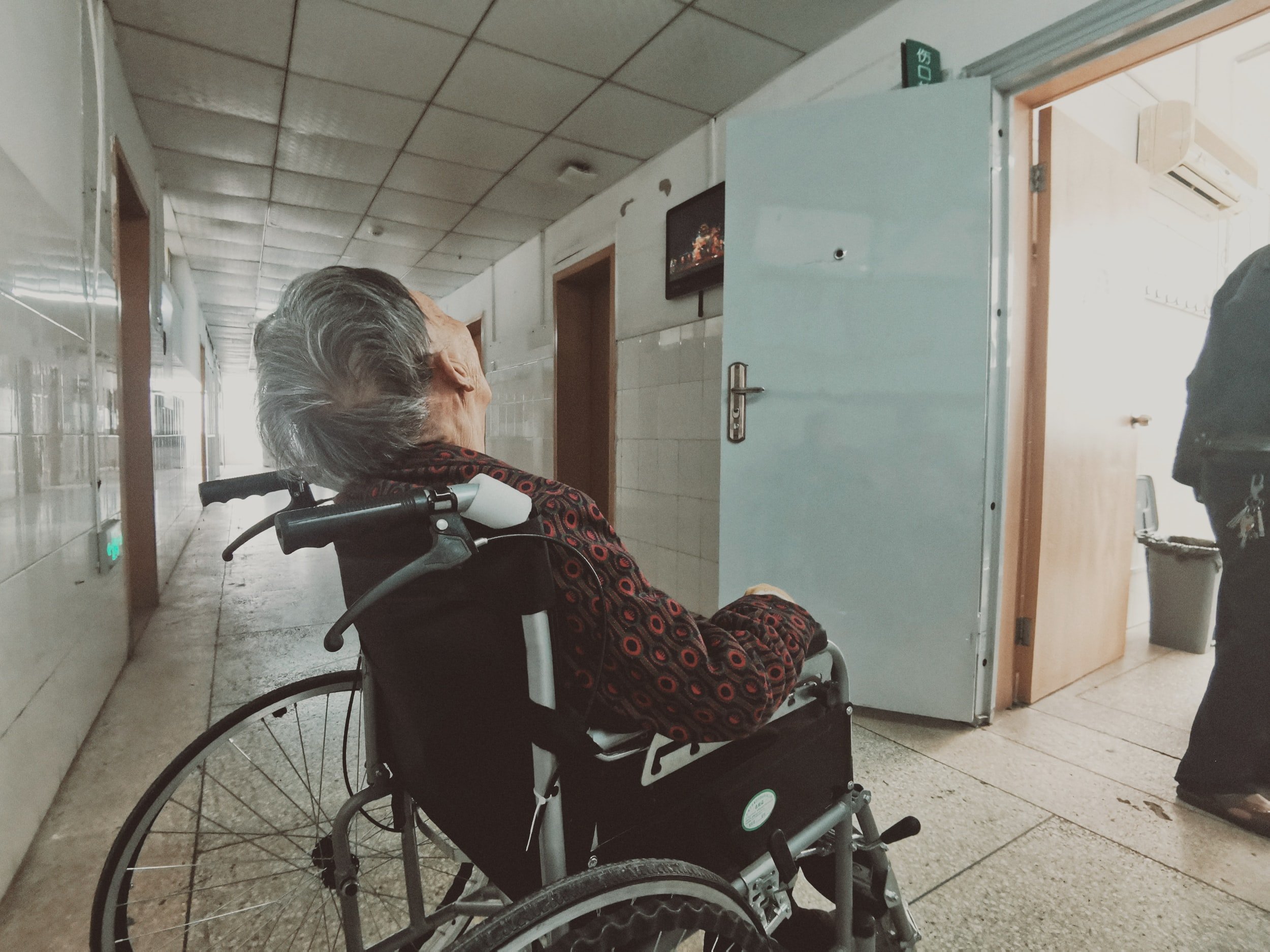Pros and Cons of At-Home Physical Therapy
/Guest post by Lulu Silveyra
Accidents and injuries are a difficult fact of life for millions of people every year, with many of those requiring the services of either at-home or inpatient physical therapy. This post-acute treatment will usually be completed by trained professionals after a discharge from a skilled nursing facility or hospital and is designed to help you regain functions of daily life, ensuring that you can move around and take care of yourself to your maximum ability. Although there are many factors to be considered, at-home therapy is considered by many to be a more affordable and comfortable choice overall compared to inpatient therapy. In this article, we’ll look into the conveniences, benefits, and drawbacks of physical therapy at home to help you make a safe and educated choice on the type of care that is right for you.
Pros of At-Home Physical Therapy
If you took a generalized poll of residents of skilled nursing facilities, the majority of them would likely say that they prefer to do therapy at home. The reasons for this are rather simple: no one wants to leave the home they’ve lived in their whole life, and studies have shown that creating a home-like environment stimulates a more profound and effective healing process. Essentially, the appeal of at-home physical therapy boils down to comfort and dignity, while usually costing less than a stay in a nursing facility.
Cost
Staying in a nursing facility can cost hundreds or even thousands every day. Nursing facilities must pay their staff and cover all the expenses of running a large building, which can leave you with substantial bills or deductibles even after insurance is billed. If at-home physical therapy is an achievable goal for you, it will help you save money.
Comfort
When you’re in a facility, you might find that there are many little things you miss from the comfort of your home, from being able to eat the breakfast you want, to spending time outside when you want. Living and doing physical therapy at home will allow you to live a more flexible and familiar lifestyle.
Dignity
Performing physical therapy at-home instead of in a facility places you at ease and allows you to feel as though you are taking a more profound role in your betterment and care plan. If you can succeed with physical therapy at home and successful completion of personal care and mobility, then you’ll not only be healthier, but you’ll also find that recovering has given you a deep sense of freedom. Part of this will involve maintaining a steady trajectory of completing your therapy workouts on a self-motivated basis and consuming a healthy diet, which is shown to reduce recovery time and improve long-term health.
Although there are many different types of physical therapy exercises you can do at home, the specific exercises will be explained in detail by a care team of doctors, nurses, and physical therapy (PT) professionals. In addition, they may be carried out by a CNA or PT aides who are either in training, taking on a restorative nursing assistant role, or who just perform these tasks on a daily basis. Much of the time, these exercises will focus on what roadblocks are currently in the way of functioning at your highest level, which can include simply standing up, transferring into a wheelchair safely, or walking. If you can do all these things safely, you’d likely be considered a good candidate for completion of at-home physical therapy and eventual successful discharge from the program.
Cons of At-Home Therapy
However, the choice may not be as simple as it seems. There are still many factors to consider when considering at-home therapy, such as the level of care you will require, the home environment, and the benefits of nursing facilities like access to 24/7 care and dedicated amenities. If the level of care you require is too high for you to safely be alone and perform daily activities, at-home therapy may be too expensive, difficult to obtain, or dangerous, and inpatient therapy is likely the best alternative until you recover to a sufficient level to return home.
If the home environment is unsafe or the amount of care required is too steep, at-home care can be impossible, at least for a while. However, with the right amount of hard work and good faith effort towards recovery, combined with a safe home environment to return to, many people in skilled nursing facilities can go home and achieve the same quality of life they had before their injury or accident. At-home physical therapy will require you to be, potentially, alone at home for stretches of time, so your care team will usually want you to be able to perform successful transfers into and out of a bed, and make sure that you can complete the functions of personal care, such as showering and using the bathroom, without the assistance of a CNA.
Although your post-discharge requirements would likely include at least a visit from the nursing home to make sure it’s safe before return, and possibly some CNA or nursing visits, the time they can spend at your home is limited, as insurance will almost never pay for 24/7 care at home. Unless you can afford to pay privately for round-the-clock care, if you need the type of on-call assistance that can only be provided by full-time nursing staff, then inpatient therapy is probably the right choice, until you recover. The focus from then will be on decreasing the assistance you need, as CNAs and nursing staff are trained and incentivized to condition patients towards greater freedom of action and mobility. If you can be a dedicated and self-motivated patient in recovery, it decreases staff workload, improves patient dignity, and completes the care team, allowing everyone assigned to you to make more effective decisions. Studies have shown the benefits that come with active participation in your healthcare choices: “more appropriate and cost-effective services, and ultimately enhanced health outcomes, quality of life, and satisfaction of patients.”
How to Make the Right Choice for You
While there’s a lot of information to consider, making the right choice for you will come, first, from finding a healthcare team that works for you. Don’t be afraid to speak up and advocate for yourself. You are the most powerful advocate within the system while you are there, and the words of residents or patients of hospitals and nursing homes carry a lot of administrative and legal authority when properly utilized. If you don’t feel like you are being heard, or your care team is responsively reacting to your concerns and needs, you’re allowed to voice your concerns within the system and address them in a way that will satisfy everyone.
However, if you’re able to take care of yourself, complete basic mobility tasks, and provide a safe living environment for yourself, then at-home physical therapy is an excellent choice for improved, healthy, and long-term recovery. It will help you keep costs low, as often you’ll still be paying rent while in the hospital or nursing facility in addition to your bills there, and will allow you to live the way you’re used to and with more flexibility. As anyone that’s been admitted to or worked in a hospital or skilled nursing facility can attest, it’s best to keep these stays as short as possible, as they have a way of ending up longer than you would think: complications can arise anytime from various issues like falls, injuries, infections due to an unfamiliar environment, issues with paying for your house, or the emotional fallout arising from suffering an injury and sudden change to your lifestyle.
It’s important to remember that there are many benefits to inpatient rehab too though, such as improved safety, dedicated, 24/7 care, and amenities handling your food, laundry, and other basic needs. Find a healthcare team that you feel listens to and advocates for you, from the ones you interact with every day, like CNAs and nurses, all the way up to your doctor, who makes the final call on most decisions regarding your medical status. If you find a team with your best interests at heart and make sure you have all the information you need to make the right choice, then choosing therapy should be a relatively straightforward decision based on your goals, motivations, and the level of care you require.
Lulu Silveyra is a certified athletic trainer and has worked with several collegiate sports teams in the sports medicine field. She wants to share her knowledge with others.








































